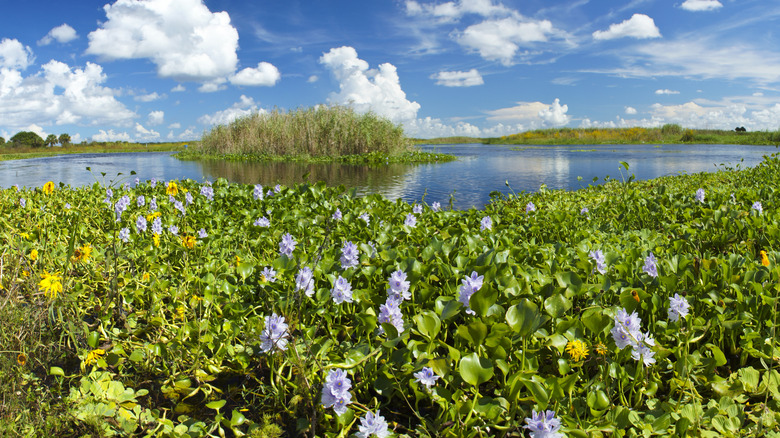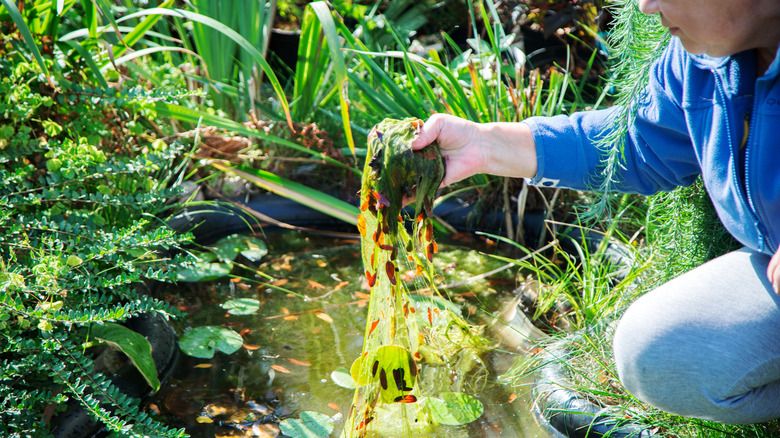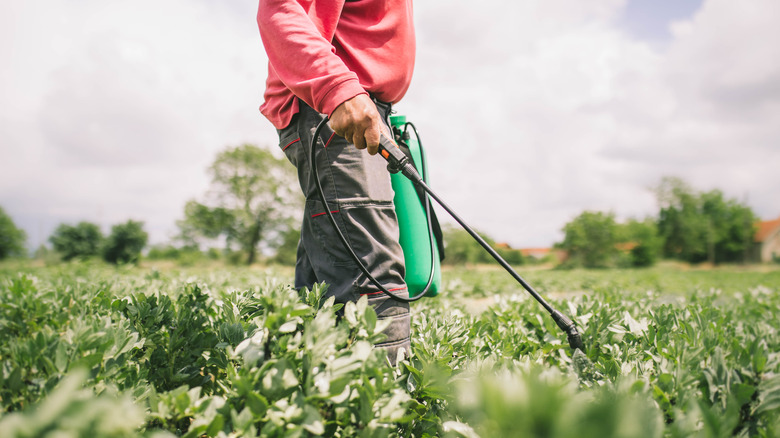How To Remove Stubborn Water Hyacinth From Your Yard
At first glance, you might find the lavender flowers and glossy green leaves of the water hyacinth attractive, but don't let its beauty fool you. Water hyacinth is notorious for its incredible reproductive capabilities; it proliferates roughly every six days through seed dispersion and floating plantlets. The result? In no time, it blankets the surface of stagnant water bodies. Draining ponds, herbicidal treatments, or utilizing climate conditions — these are just a few methods to handle water hyacinth. However, effective eradication comes with proper identification.
This plant is not just an inconvenience but an ecological issue. By dominating the water's surface, it blocks sunlight and disrupts water circulation, hampering the growth of native plants below and disrupting the ecosystem's natural balance. Furthermore, its rapid overgrowth can cause serious drainage problems, increasing the risk of flooding. So, while eradication methods vary in complexity and effectiveness, the need for action is undeniably urgent.
Climate and manual removal: effective methods for water hyacinth control
Climate can be a significant factor when tackling water hyacinths. The plant is less likely to survive in environments below 20°F. Therefore, in colder climates, nature might be doing some of the work for you. However, not everyone lives in an area where the temperatures plummet, and even if you do, relying solely on climate isn't foolproof. In such cases, a direct approach is necessary. This will usually involve proper draining and cleaning of your pond and manually removing all visible plant matter. Remember, this plant can regrow from even the tiniest fragment, so thorough removal is crucial.
Disposing of water hyacinth is another challenge; you can either compost it or bag it for trash disposal. If you opt for composting, keep the compost pile safe away from any water bodies to prevent unwanted spread due to runoff. Nets, pumps, or any other tools you've used in the infested pond may also carry plant fragments. Therefore, ensuring all equipment is well-cleaned is a vital but frequently missed step in the manual removal process. You may have to repeat this manual removal process several times. Since it's a weed, it can bounce back quickly. The difficulty and labor intensity of this manual method can't be overstated. However, when done carefully and repeatedly, it's a method that offers the least ecological impact while still being effective.
Herbicidal approaches: effective yet environmentally risky methods
For those situations where manual removal falls short or when water hyacinth has taken over a large water body, herbicides can be a viable option. Bispyribac-sodium offers a systemic approach to water hyacinth eradication. It comes in water-soluble powder form, which you then dissolve in water and apply to the affected area. The plant absorbs bispyribac-sodium, a systemic herbicide that targets its vital internal systems. However, the application of herbicides comes with a set of considerable environmental risks. First, as water hyacinths die off due to herbicide application, they decompose and can severely deplete oxygen levels in the water, which is detrimental to pond life. They also risk killing other aquatic plants indiscriminately, exacerbating the disruption of local ecosystems.
Because of these significant environmental risks, it's important to consider treating your infested water body in parts, especially if it's sizable. This segmented approach allows the decomposing plants in one area to have less of an overall impact on oxygen levels, reducing the risk of large-scale aquatic life loss. Each section can be treated and left to decompose for a couple of weeks before you proceed to the next area. It's a way to mitigate the environmental impact, even if it can't eliminate it entirely. In short, the decision to use herbicides should never be taken lightly. Considering the ecological implications, it's a potent method but should be your last resort. Furthermore, always adhere strictly to manufacturer guidelines when using herbicides and understand the ramifications fully.


